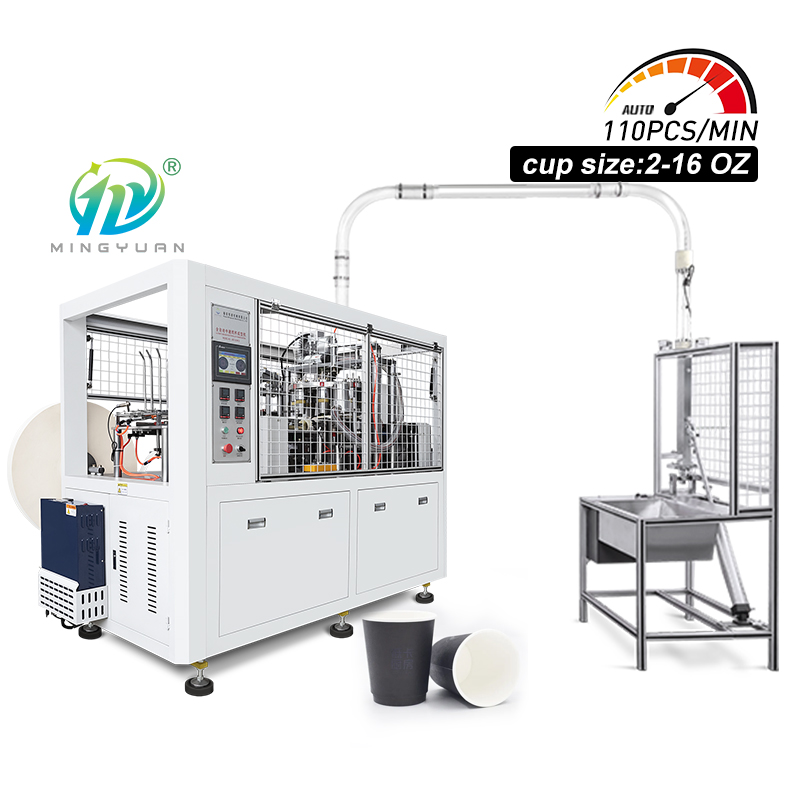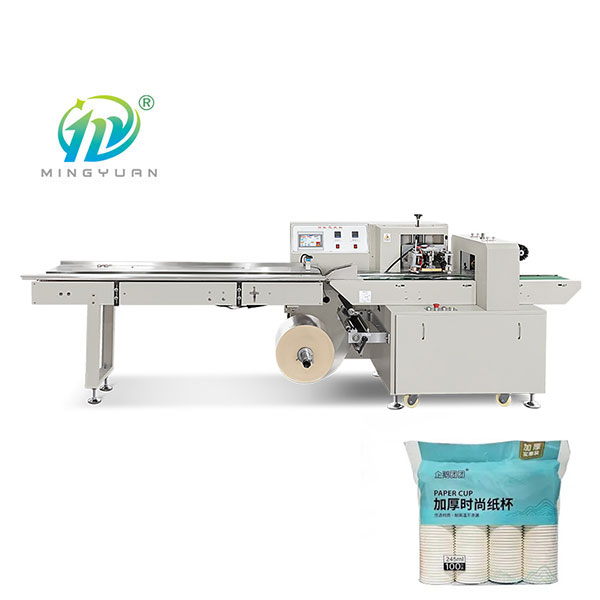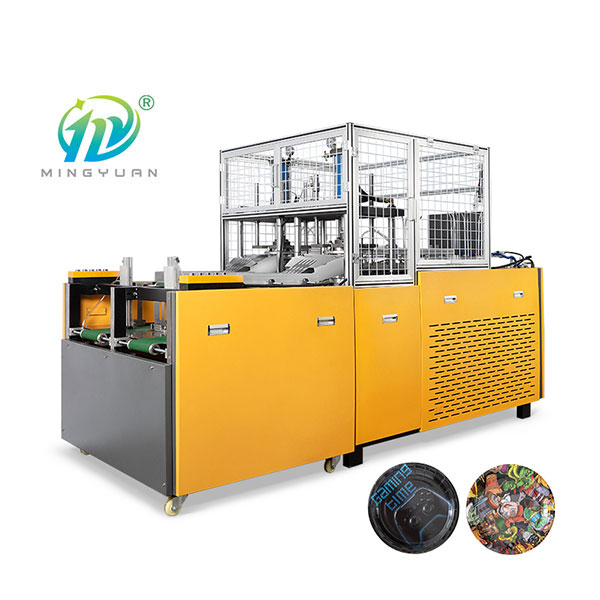In the paper cup production industry, high - efficiency paper cup forming machines play a pivotal role. These machines are designed to transform raw materials into high - quality paper cups with speed and precision. Understanding the key components and their functions is essential for manufacturers aiming to optimize production, reduce costs, and ensure top - notch product quality.
Key Components and Their Functions
1. Paper Feeding System
The paper feeding system is the starting point of the paper cup production process. It typically consists of a paper reel holder, unwinding device, and a series of rollers. The paper reel, which contains the raw paper material, is placed on the holder. The unwinding device ensures a smooth and continuous release of the paper, while the rollers guide the paper accurately into the machine. Precise control of the paper feeding speed is crucial. For example, in high - speed paper cup forming machines, an advanced servo - motor - driven paper feeding system can maintain a consistent paper - feeding rate, reducing the risk of paper jams and ensuring uniform cup production. This component is vital as any irregularity in paper feeding can lead to defects in the final cup product, such as uneven cup walls or misaligned printing.
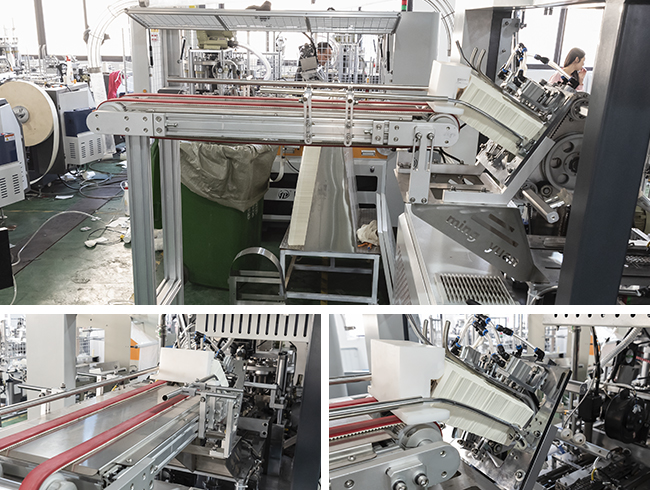
2. Printing and Coating Unit
Many modern paper cup forming machines are equipped with an integrated printing and coating unit. This unit allows for the application of various designs, logos, or patterns on the paper before it is formed into cups. It can use different printing techniques, such as flexographic printing or digital printing. The coating function is equally important. A food - grade coating is often applied to the inner surface of the paper to make the cup suitable for holding beverages or food items. This not only provides a hygienic barrier but also enhances the cup's liquid - resistance properties. For instance, a water - based polyethylene coating can effectively prevent liquid penetration, ensuring the cup's integrity during use. The printing and coating unit adds value to the paper cups, making them more appealing to consumers and suitable for different marketing purposes.
3. Cup Forming and Shaping Mechanism
The cup forming and shaping mechanism is the heart of the paper cup forming machine. It uses a combination of heat and pressure to transform the flat paper into a three - dimensional cup shape. This component usually includes a set of molds. The upper mold and lower mold work in tandem. The paper is first placed between the two molds, and then heat is applied. The heat softens the paper, allowing it to be easily molded under pressure. As the molds close, the paper is shaped into the desired cup form. The precision of the molds is critical. High - quality molds with smooth surfaces and accurate dimensions can ensure that each cup has a consistent shape and wall thickness. Some advanced machines also have adjustable molds, which can be modified to produce different cup sizes and styles, increasing the machine's versatility.
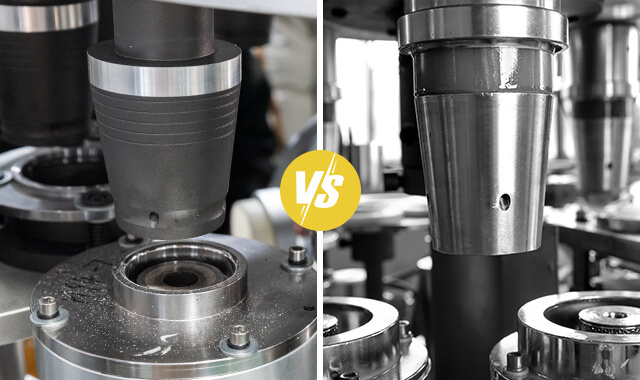
4. Bottom Sealing Component
The bottom sealing component is responsible for securely sealing the bottom of the paper cup. This is a crucial function as a poorly sealed bottom can lead to leakage, rendering the cup useless. There are different bottom - sealing methods. One common method is heat - sealing. A heating element is used to melt the coating material on the bottom of the cup and the bottom - piece paper, fusing them together. Another method is mechanical sealing, where the edges of the bottom piece are crimped or rolled onto the cup body. In high - efficiency machines, the bottom - sealing process is automated and precisely controlled. Sensors are often used to detect the position of the cup and the bottom piece, ensuring accurate alignment before sealing. This component ensures the structural integrity and functionality of the paper cup.
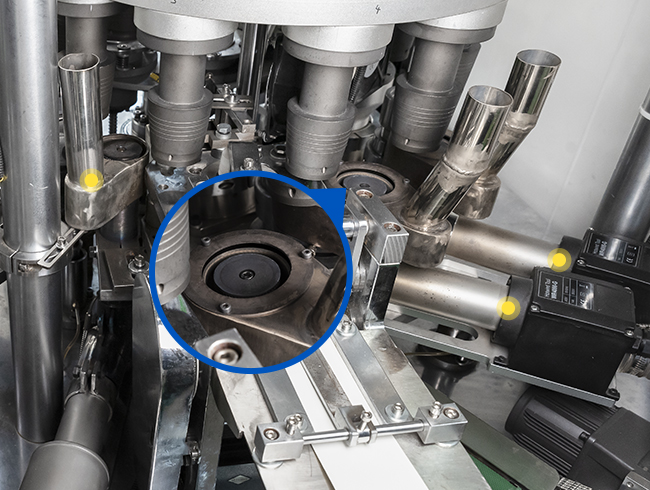
5. Trimming and Finishing Unit
After the cup is formed and the bottom is sealed, the trimming and finishing unit comes into play. This unit trims off any excess paper or rough edges from the cup. It uses sharp cutting blades or rotary cutters to achieve a clean and smooth cut. The trimming process not only gives the cup a neat appearance but also ensures that the cup's rim is uniform, which is important for proper lid - fitting and ease of use. Some machines also have additional finishing functions, such as rim curling. Rim curling can enhance the cup's aesthetics and make it more comfortable to hold. The trimming and finishing unit contributes to the overall quality and marketability of the paper cup.
6. Control System
The control system is the brain of the high - efficiency paper cup forming machine. It consists of a programmable logic controller (PLC), touch - screen interface, and various sensors. The PLC is responsible for controlling the operation of all components of the machine. It can be programmed to adjust parameters such as production speed, temperature, and pressure according to the specific requirements of the paper cup production. The touch - screen interface allows operators to easily monitor and modify the machine's settings. Sensors are placed at different key points of the machine, such as the paper - feeding area, cup - forming station, and quality - inspection points. These sensors can detect issues like paper jams, incorrect cup formation, or low - quality seals in real - time. The control system enables the machine to operate smoothly, efficiently, and with high precision, reducing human error and increasing productivity.
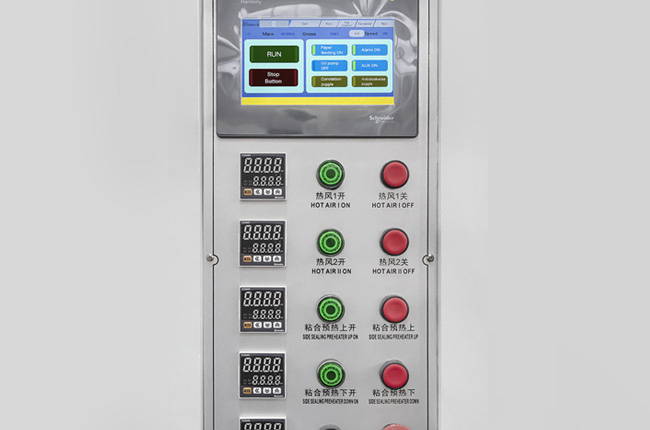
7. Quality Inspection Sensors
Quality inspection sensors are an integral part of modern high - efficiency paper cup forming machines. These sensors can detect a wide range of defects. For example, optical sensors can be used to check the print quality, ensuring that the colors are vibrant, the patterns are correctly aligned, and there are no smudges or missing prints. Thickness sensors can measure the thickness of the cup walls and the bottom to ensure they meet the required standards. Seal - integrity sensors can detect any leaks or weak seals at the bottom of the cup. If a defective cup is detected, the machine can be programmed to automatically reject it, preventing sub - standard products from entering the production line. These sensors play a crucial role in maintaining the high quality of the paper cups produced.
Conclusion
A high - efficiency paper cup forming machine is a complex piece of equipment with multiple key components, each performing a distinct and essential function. From the paper - feeding system that initiates the process to the quality - inspection sensors that ensure product quality, every component contributes to the overall efficiency, productivity, and quality of the paper cup production. Manufacturers need to have a deep understanding of these components to optimize their production processes, make informed decisions about machine maintenance and upgrades, and ultimately produce high - quality paper cups that meet the demands of the market. As technology continues to advance, we can expect further improvements in the design and functionality of these key components, leading to even more efficient and high - quality paper cup production.




